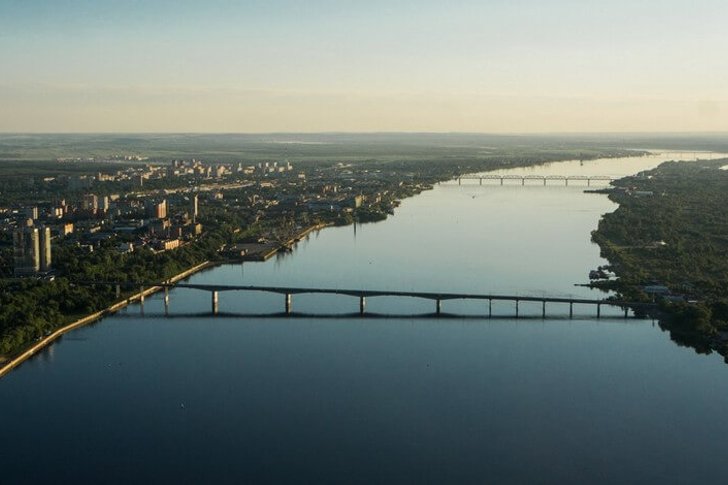Translated from the Finno-Ugric language, the name "Perm" means "Far land". For 200 years, the city was considered the official capital of the Urals, until this title passed to Yekaterinburg. From the beginning of the 18th century, Perm began to develop as a major metallurgical center of the Russian Empire - modern factories were built here at a rapid pace.
It is interesting to visit the quarters built up with wooden houses - from the estates of the 19th century to the Stalinist barracks, as well as the territory of the former Tatar settlement. Attention is drawn to the ancient buildings on Sibirskaya Street, the Motovilikha district, which for a long time developed as an independent settlement, and the grandiose building of the Central Internal Affairs Directorate fanned by gloomy legends.
What to see and where to go in Perm?
The most interesting and beautiful places for walking. Photos and a short description.
- Esplanade
- Permyak salty ears
- The Legend of the Perm Bear
- Art object Happiness is not far off
- Perm art gallery
- Peter and Paul Cathedral
- Holy Trinity Stefanov Monastery
- Ascension-Feodosievskaya Church
- Gribushin's house
- Meshkov's house
- Theater At the Bridge
- Perm Academic Theater-Theater
- Opera and Ballet Theater named after P. I. Tchaikovsky
- Museum Motovilikha Plants
- Museum-diorama in Motovilikha
- Museum of Contemporary Art PERMM
- Museum of Perm Antiquities
- Perm-36
- Architectural and Ethnographic Museum Khokhlovka
- The building of the Central Internal Affairs Directorate for the Perm Territory
- Perm gates
- Rotunda in Gorky Park
- Garden of Eden Park
- Kamskaya HPP
- Kama River
Esplanade
Until the middle of the 20th century, the Esplanade was a residential area with two-story wooden houses. In 1982, a new building of the Drama Theater was built here, in 1985 - a monument in honor of the heroes of the war and a color-music fountain, later replaced by a more modern one. In our time, to improve the external appearance of the place and increase its attractiveness for residents, cultural objects continue to be erected here.

"Permyak salty ears"
Urban sculpture, made in the form of a circle-frame with ears, where you can put your face and take a picture. The composition also includes the figure of a photographer standing opposite, ready to take a picture with a rare camera. The monument is located on one of the central streets of Perm. It was installed in 2006. The name is associated with the traditional nickname of the inhabitants of the Perm region.
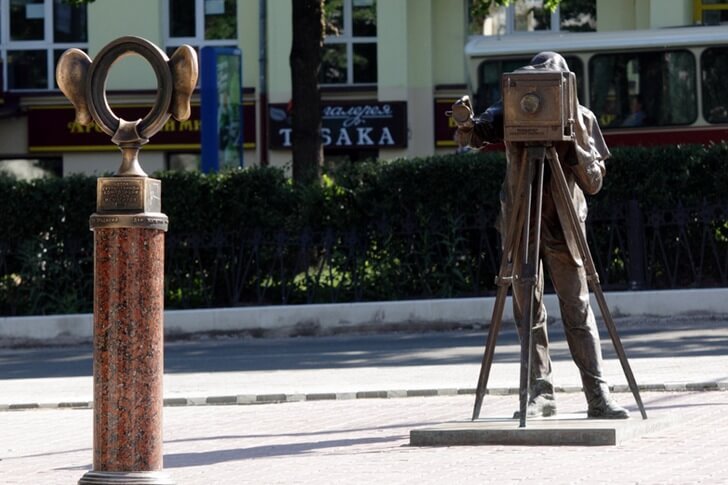
"The Legend of the Perm Bear"
Another urban sculpture depicting the famous symbol of the city - the bear. She decorated the central part of Perm in 2009 (the first version of the monument was made of stone and installed in 2006). According to the original idea of the authors of the project, the composition symbolizes the stereotype common among foreigners that bears roam the streets freely in the Ural cities.

Art object "Happiness is not far off"
The art object is an inscription of two-meter red letters, located on the Kama embankment near the river station. It was created by B. Matrosov for the ArtPole festival. The composition ended up in Perm in 2009. The attraction gained popularity largely thanks to television, as it appeared in a couple of well-known Russian TV series and even in an American music video.

Perm art gallery
An art museum containing more than 50 thousand works of art created from ancient times to the present. There are collections of Perm wooden sculpture, icons, engravings, antique ceramics, medieval paintings. The exposition is located in the building of an architectural monument - the Cathedral of the Transfiguration of the Savior of the late 18th - early 19th centuries, built according to the project of I. I. Sviyazev.
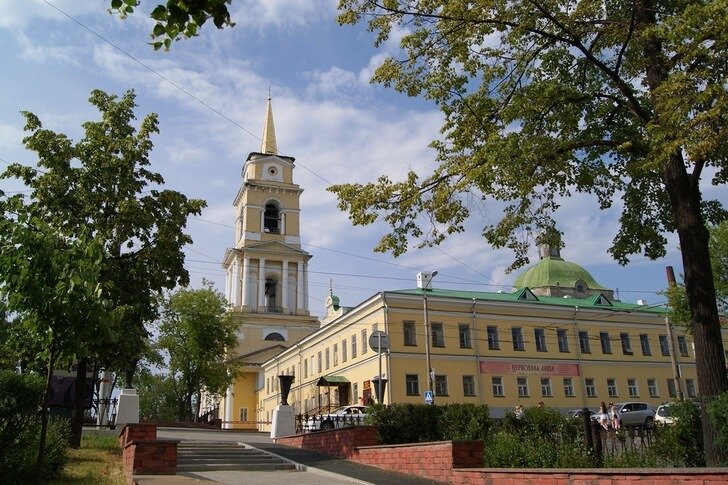
Peter and Paul Cathedral
The temple is one of the first stone buildings in the city. It is believed that the development of the city in the 18th century began with its laying. The building was built in the provincial baroque style on the site of an earlier church. In 1929, the temple was closed as part of a general anti-religious campaign, while almost all valuable church property was confiscated. Worship services resumed in the 1990s after extensive restoration of the building.
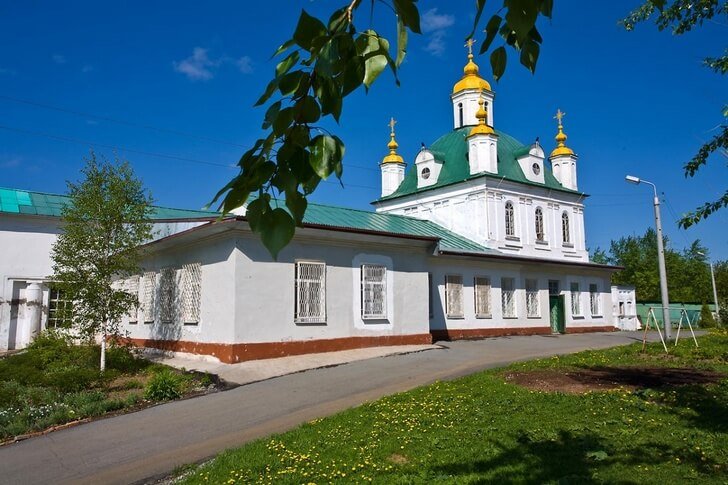
Holy Trinity Stefanov Monastery
The history of the monastery began at the end of the 18th century with the construction of a wooden church for the workers of the copper smelter. In 1816, the construction of a stone church began, at which a monastery was gradually formed. In 1935, the monastery was abolished, the main part of the premises was transferred to the production warehouses of the bakery. In 1995, the Holy Trinity Stefanov Monastery resumed its activities.
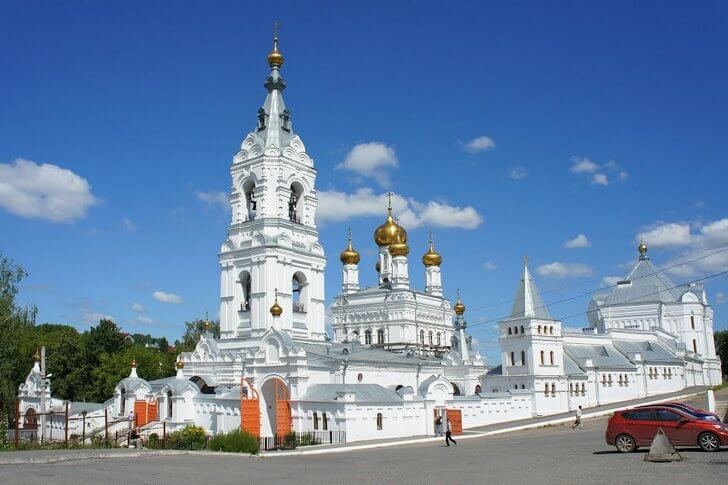
Ascension-Feodosievskaya Church
The temple was erected in 1902 largely thanks to the donations of the townspeople. It became the last church in Perm built before the 1917 Revolution. In those days, the people called it "merchant". In the 1930s, after being confiscated by the authorities, it was converted into a bakery. In the 1970s, a decision was made to restore and place it inside the concert hall. In 1991, the building was returned to believers.
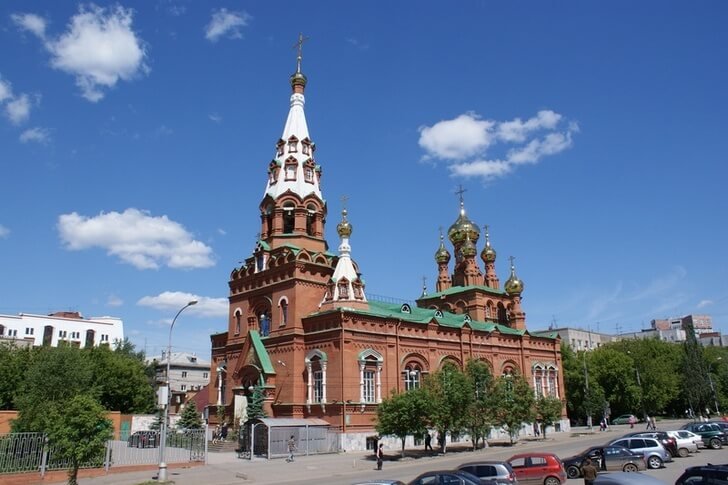
Gribushin's house
The picturesque Art Nouveau mansion is considered one of the most beautiful buildings in Perm. It was erected at the end of the 19th century according to the project of A. B. Turchevich for the family of one of the city officials. In 1905, the merchant S. M. Gribushin bought the house and rebuilt it according to his own taste. In 1919, the merchant's family left Russia, and the building became the property of the authorities. At various times, a military hospital and a children's hospital were located on its territory.
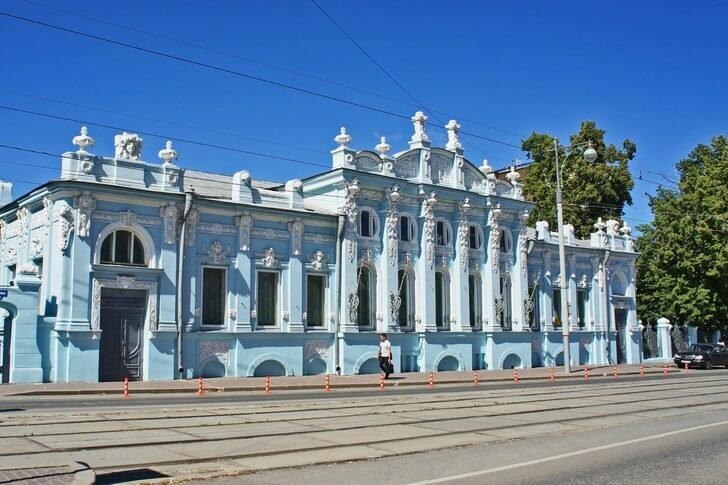
Meshkov's house
City mansion in the historical center of Perm, built at the beginning of the 19th century. The house burned down twice, after which it was rebuilt with significant changes - if in the first version Russian classicism prevailed, then in later projects the architect preferred the Art Nouveau style. Nowadays, a branch of the Perm Museum of Local Lore with a historical exposition is located on its territory.
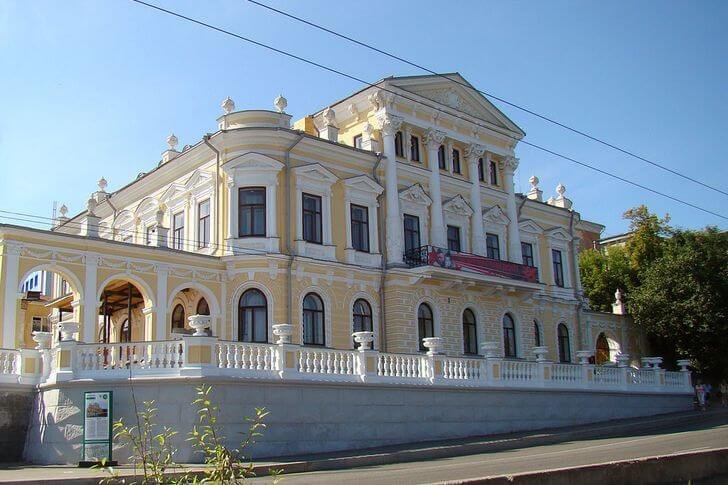
Theater "At the Bridge"
The stage was founded in 1988 by S.P. Fedotov, an honored artist of Russia and a well-known artist on the basis of the Nytvenskaya youth theater studio, where interesting experimental productions were given. The theater received its own building, located next to the Kamsky Bridge, in 1992. Today the institution is famous for its original plays, to which the audience specially come from other cities.

Perm Academic Theater-Theater
Drama stage founded in 1927. Over the past time, she managed to change several sites. Today the theater is located in a building built in 1981, which is considered a regional architectural monument. The building was built according to the project of V.P. Davydenko. In 2005-2006, its restoration was carried out - during the work, the facades and some elements of the exterior decoration were updated.
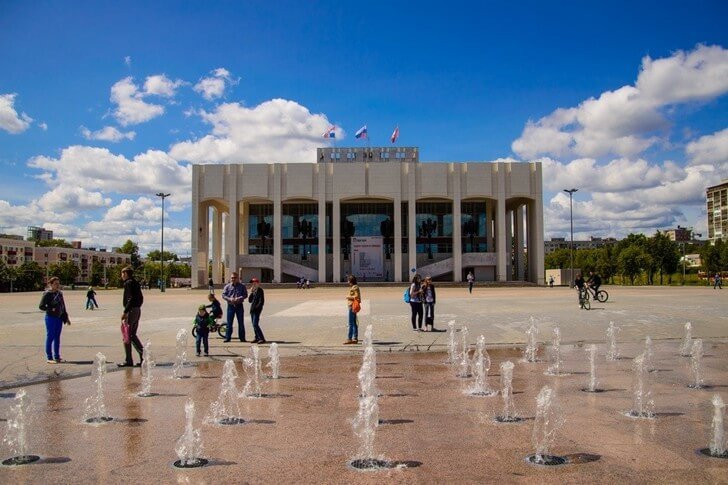
Opera and Ballet Theater named after P. I. Tchaikovsky
The theater appeared in 1870. The building, which has survived to this day, was built in 1879. In the middle of the 20th century, it was completely reconstructed, without touching the historical appearance of the stage. The main goal of the theater is to present to the audience the entire creative heritage of the famous native of the Kama region - composer P. I. Tchaikovsky. All his works were staged here: 3 ballets and 10 opera performances.
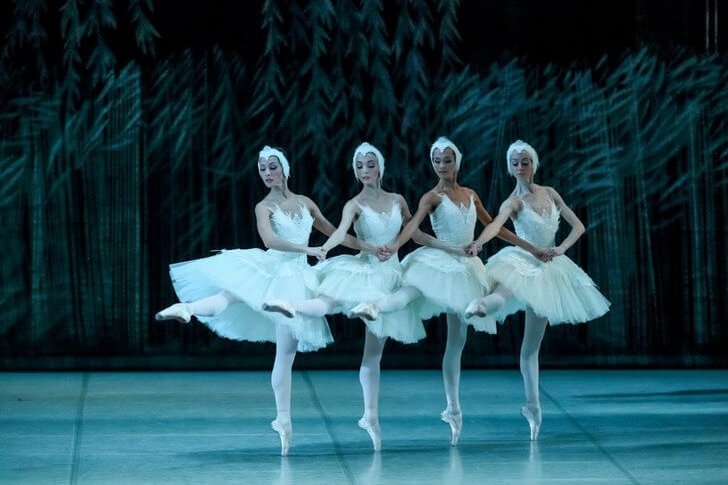
Museum "Motovilikha Plants"
The emergence and development of Perm was largely due to the launch of metallurgical plants in the 18th century. Then this area was called Motovilikha. The exposition of the museum is devoted to the history and development of these enterprises. Of particular interest is the part of the collection located in the open air and consisting of massive artillery pieces and rockets produced by the plant at different times.
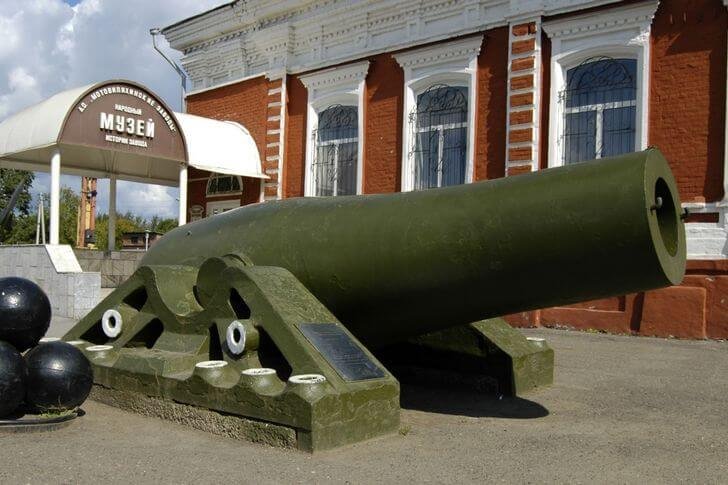
Museum-diorama in Motovilikha
The exposition is a branch of the Perm Museum of Local Lore and is part of the memorial on Mount Vyshka, dedicated to the events of the revolutions of the early 20th century. The history of the collection began in 1920 with the opening of the monument to the Fighters of the Revolution. The main exhibit of the exhibition is a panoramic canvas made by a group of military artists and dedicated to the events of the 1905 armed uprising in Motovilikha.
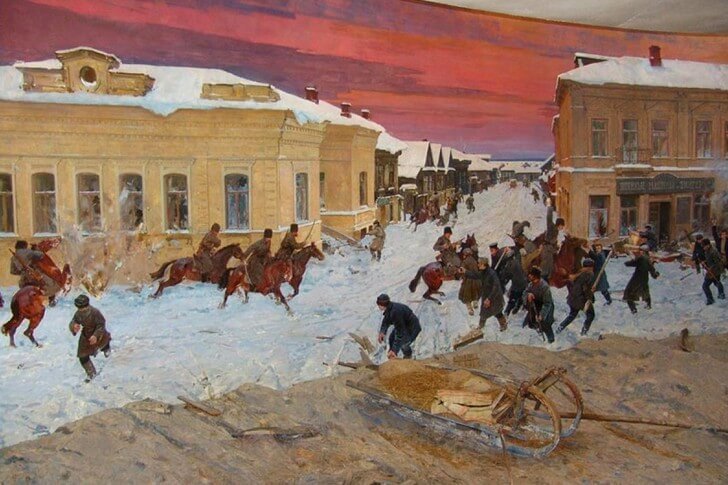
Museum of Contemporary Art PERMM
The museum appeared in 2009 after the exhibition of contemporary art "Russian Poor", which exhibited art objects created by progressive authors from sand, clay, cardboard, foam rubber, adhesive tape and other "poor" materials. Until 2014, the exposition was located on the territory of the former river station. The main mission of the museum is the development of current trends, the creation of a creative environment and the improvement of the image of Perm.
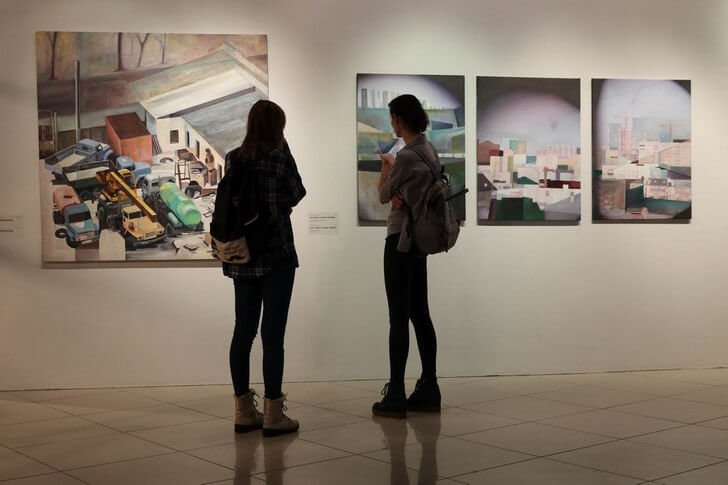
Museum of Perm Antiquities
The collection consists of geological exhibits: fossils, fossils, skeletons of ancient animals that existed on Earth millions of years ago. Many finds belong to the Permian geological period. The museum has a rich paleontological exposition, which arouses genuine interest of visitors. Interesting and informative excursions take place on its territory.

Perm-36
Museum of the History of Political Repressions, located on the territory of a former prison camp, about 120 km from Perm. Its exposition is unique. Until 1988, state criminals and political prisoners served their sentences here. After a walk through the museum territory, the visitor will be able to get an idea of the GULAG camp system, the conditions of detention of prisoners and the difficult everyday life of a prison. The museum is quite scandalous, for many it is just another attempt to denigrate the Soviet period of history.
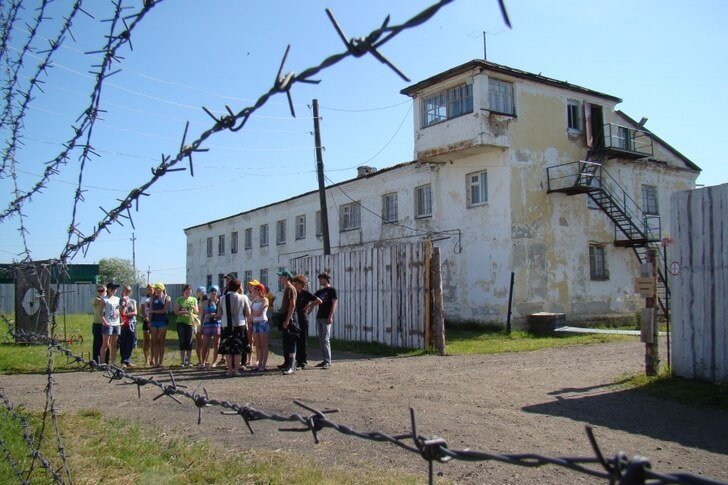
Architectural and Ethnographic Museum "Khokhlovka"
The complex is located on the picturesque bank of the Kama River, about 40 km from Perm. It was founded in 1969 and actually became the first museum of wooden architecture in the Urals. The exposition is a group of open-air buildings dating back to the 17th - first half of the 20th centuries. In some houses, historical interiors have been recreated and ethnographic collections have been placed.
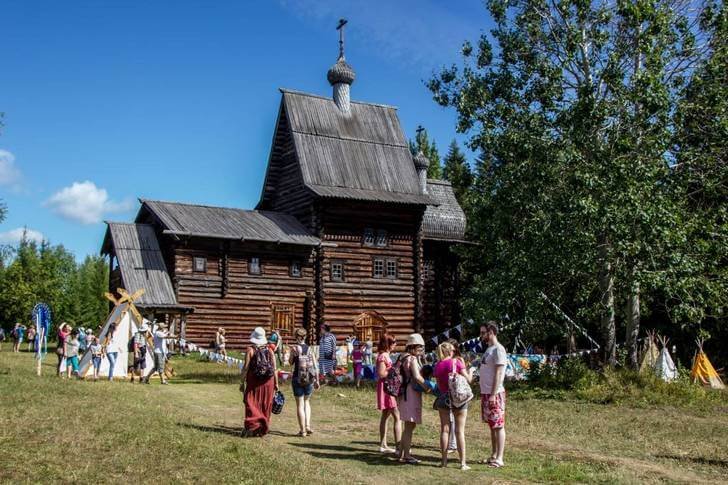
The building of the Central Internal Affairs Directorate for the Perm Territory
Once the building, built in the style of the so-called "Stalinist monumentalism" in the middle of the 20th century, belonged to the KGB. In Soviet times, there were many terrible legends about it, which is why it acquired the frightening nickname "Death Tower". People shared stories of how the innocent were tortured in the dungeons and the condemned were executed by throwing them from the roof into the courtyard. Today the building belongs to the local police department.
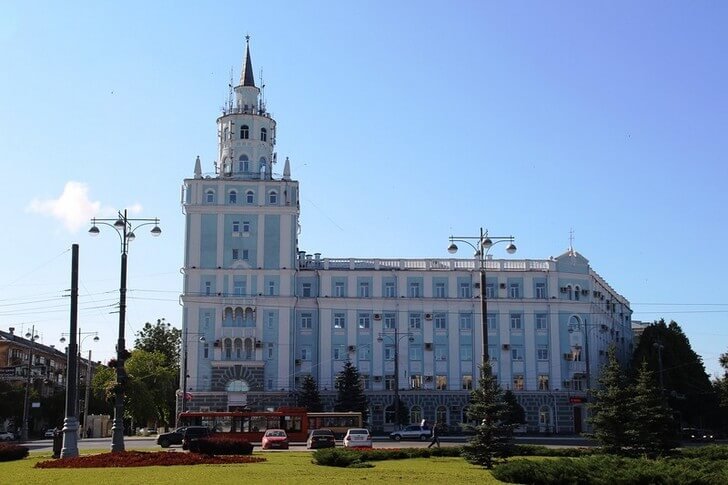
"Perm gates"
Art object made of wood, created in 2011 for the exhibition of the PERMM Museum. It is a 12-meter structure made of spruce logs in the shape of the letter "P". Currently, the sculpture is located on the territory of the Square of the 250th Anniversary of Perm, known as the "Park of Stones". Within this park there are samples of rocks brought from different regions of the Perm region.
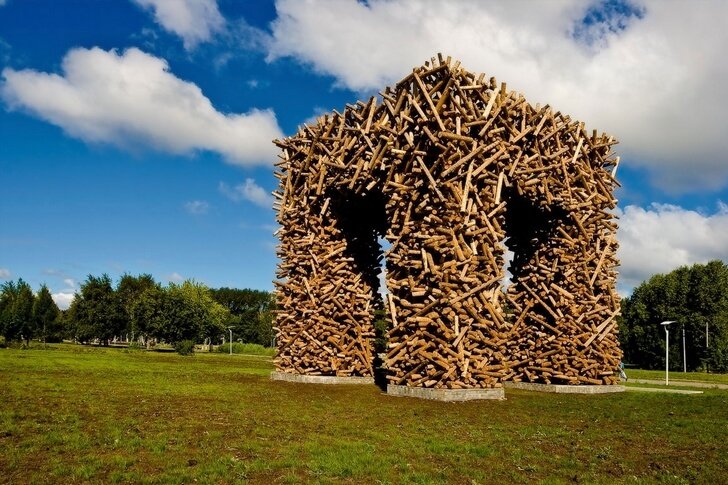
Rotunda in Gorky Park
In the city park of culture and recreation there is a remarkable building - a rotunda of the 19th century, built according to the project of I. I. Sviyazev for the visit of Emperor Alexander I to Perm. It was here that in 1824 the autocrat met with the authorities and residents. Today, the architectural monument is considered a symbol of the city. Newlyweds often choose this place for exit registration of marriage.
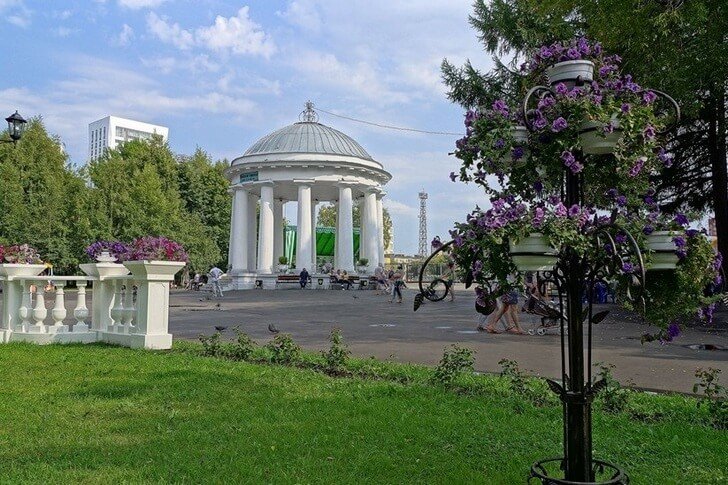
Garden of Eden Park
The park appeared in 1865 on the site of a closed copper smelter. From the moment of its opening and under Soviet rule, its territory was monitored by workers, organizing events for cleaning and landscaping lawns. In the second half of the 20th century, the park gradually fell into disrepair. In 2010, after a large-scale reconstruction, the Garden of Eden reopened to visitors. Today it is a popular holiday destination.
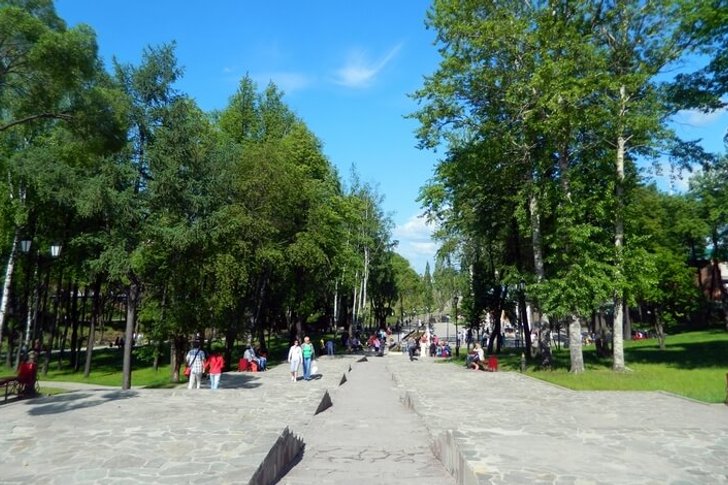
Kamskaya HPP
The powerful hydroelectric power plant is part of the Volga-Kama cascade of hydroelectric power stations. Its construction was completed in 1958. Basically, the work involved the labor of prisoners from the surrounding camps, which was very typical for the Soviet "buildings of the century." Today, hydroelectric power plants, as before, are of key importance for providing electricity to vast territories of the European part of Russia.
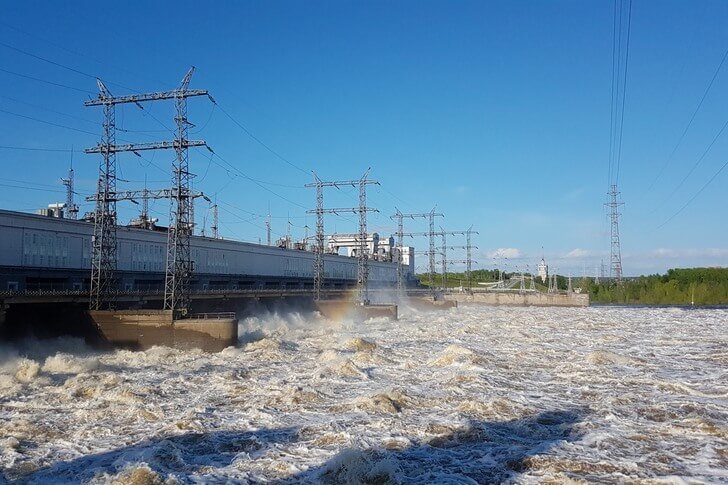
Kama River
A large water artery with a length of more than 1800 km, a powerful tributary of the Volga. The river is navigable, and many species of fish are also found here. Its picturesque shores attract a considerable number of travelers. A major sailing tournament "Kama Cup" is held here. Within Perm, a well-maintained embankment is equipped along the river, across which automobile and pedestrian bridges are thrown.
